Your artwork will be judged by an international panel of judges (the jury) appointed by the organizer. All members of the jury are experienced practitioners of the collodion process and their judgment shall be based on their personal experience and rich knowledge. The jury will focus on technical quality and wet plate skill, as well as artistic creativity and originality. As the wet plate scene is small and specific in that many authors are mutually acquainted and follow each other’s work, and with many of them basing their artistic stamps on recognizable motifs and models, we’ve created special judging Rules to avoid bias and conflicts of interest.
These guidelines are in place to ensure that the Winners and Finalists are selected based on the quality of their wet plate photography, rather than their name and reputation recognizable from their previous work. The Winners and Finalists will be determined by the judges and the organizer in accordance with the contest Rules. Their decision is final on all matters relating to the contest. The organiser will not enter into any correspondence regarding the judging or organisation of the contest. The judging will take place at the beginning of every month for the entries submitted during the previous month.
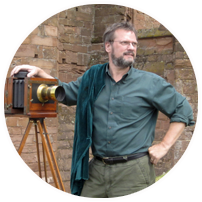
Mark Osterman is the Photographic Process Historian at George Eastman House International Museum of Photography and Film in Rochester, NY. He teaches the technical evolution of photography from Niepce heliographs to making gelatin emulsions. As an artist, his series, “Confidence,” based on a traveling medicine show he performed for twenty years, received high praise in Photo Review, After Image and Zoom magazines. Mark’s most recent writings on the subject of early photographic processes include the 19th century chapter for the Focal Encyclopedia of Photography. He began research in historic photographic processes while attending the Kansas City Art Institute in the 1970s. Together with France Scully Osterman, Mark established Scully & Osterman in 1991. They give lectures and workshops throughout the United States, Canada, Mexico, Japan and Europe. (more here www.collodion.org)
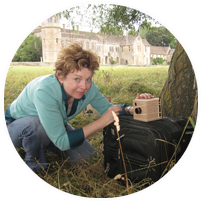
France Scully Osterman is an artist-educator, and lecturer at Scully & Osterman Studio and guest scholar at George Eastman House International Museum of Photography and Film, both in Rochester, NY. She has received glowing reviews of her “Sleep” exhibit in Art in America, Paris Photo Magazine and the Village Voice. France is recognized for her extensive knowledge of early photographic processes including photogenic drawings, wet-plate and dry-plate collodion, albumen and salt print methods. Together with Mark Osterman, she established Scully & Osterman in 1991. She gives lectures and workshops at museums and universities and teaches in their 19th century skylight studio. (more here www.collodion.org)
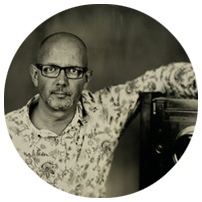
A self-made photographer with a strong liking for ancient photographic techniques. He practiced photography throughout his whole life, starting with a Nikormat ftn. The change from analog to digital seemed to be a logical step. However, the excitement and magic of films got lost during this change; everything became more predictable… too predictable. Working on the wet plate process made photography inspiring again. Being able to use antique camera’s and brass lenses with a glorious photographic history like Dallmeyer, Hermagis and Darlot. It is pure because of the possibility to use ‘simple’ chemicals to reproduce amazingly detailed pictures. In this photographic process, coincidences will greatly influence the result. Apart from working with chemicals, these coincidences can be caused by the many different weather conditions as well… (more here: www.alextimmermans.com)
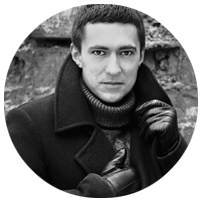
Photographer and researcher of alternative and historical photoprocesses. Alex lives and works in Saint-Petersburg, Russia. He was the first to learn the Wet-Plate Collodion Process (Ambrotype, Tintype) in modern Russia and is using it at a professional level. Alexey uses handmade processes, largeformat cameras and vintage lens for his projects. His works are present in the collection of Moscow Kremlin Museum, The Museum of the History of Photography of Russia, ROSPHOTO and in private collections in Russia, USA, Germany, Great Britain, Australia. (more here: www.ambrotype.ru)
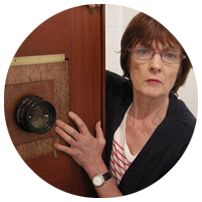
Ellie Young is the founder of Gold Street Studios. Since its establishment in 1999 gold street studios has become the centre for alternative photographic print processes in Australia and New Zealand. The studios provides a resource Centre for photographic image makers and attracts both local and international participants seeking to advance their knowledge and skills in the art, craft and science of traditional handmade and early photographic print processes. She’s a member of the Australian Institute for Conservation of Cultural Materials (AICCM), a Fellow of The Institute of Photographic Technology (IPT), a member of NAVA Education, a Master of Applied Science (Photography), a Bachelor of Applied Science Photography – RMIT, has a Diploma of Illustrative Photography – PSC, and is a Bachelor of Business – Monash University. (more here: http://www.goldstreetstudios.com.au/)
“I feel as the world speeds up and mass production controls our choices there is an increasing desire for hands on creativity and handmade objects, this includes the handmade photograph. My passion for the salt print and many other hand crafted photographic print processes increase as I teach and continue to research for improved and safer methods of practice.”
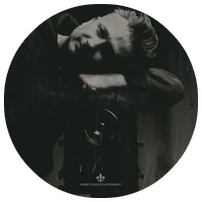
Robert is a professional painter, photographer, graphic and web designer, founder and editor-in-chief of BLUR Magazine. After recently discovering the collodion process and taking his first steps in this forgotten art, his wife simply had to capitulate and accept she’ll have Robert playing with funny smelling chemicals in the family bathroom on a daily basis. During this journey of discovery, Robert decided to launch the Equinox Wetplate contest and use the popularity and reach of BLUR magazine to promote wetplate photography worldwide. He didn’t have to look far for support of some of the most talented and well-versed collodion photographers worldwide, some of which you can see above, and so Equinox was born…